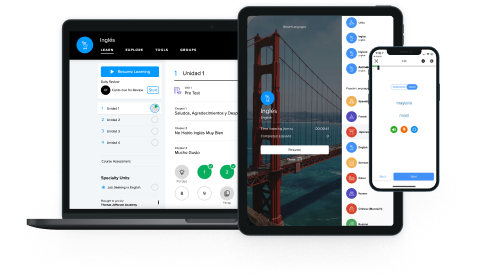When are participles used in verb tenses?
In all three tenses (past, present, and future) participles are used to form verbs in the continuous and perfect aspects. To do this, each participle is used with a specific auxiliary (helping) verb: the present participle goes with auxiliary be and the past participle goes with the auxiliary have.
Take a look at how this works in all three tenses!
Using the present participle in the past, present, and future continuous
To use the present participle in the past, present, or future continuous, just change the tense of the auxiliary verb be to the past, present, or future! The present participle does not change.
The continuous aspect is usually used for actions that continue for a period of time, but its use is a little different in each tense. Check out our posts on the present, past, and future continuous to learn more!
Using the past participle in the past, present, and future perfect
To use the past participle in the past, present, or future perfect, just change the tense of the auxiliary verb have to the past, present, or future. The past participle does not change.
Future perfect:
Muriel will have made twelve apple pies before the end of the week.
The perfect aspect is usually used to talk about something that finishes before an action or time that is the focus of a story.
I have seen this movie before…
→ before "now"
…so I know that it is good.
...so I do not need to see it again.
→ "now": the focus of the story.
We use the perfect when the fact that an earlier action happened impacts how we understand the event or situation we are focused on. Read more in our posts on past, present, and future perfect!
How are participles used as adjectives?
Both present participles and past participles are commonly used as adjectives. That means that a participle can modify a noun (or noun phrase!), adding more information about it
Just like any adjective, participles as adjectives are usually placed before the noun they modify:
Patty doesn’t like raw fish.
There was a large cat in the window.
There was a sleeping cat in the window.
Like other adjectives, past participles, are often placed after a linking verb like be or seem:
But present participles usually do not follow a verb (except for be in a continous tense!)
linking verbpresent participle (as adjective)
❌ This cat looks sleeping.
❌ My eggs seemed burning.
→ This is the past continuous tense!
Past participles vs. present participles as adjectives
Past participles are used to describe nouns that underwent a finished action, but present participles describe nouns that are doing the action. For example:
Past participles:
→ Someone fried the fish.
→ Someone forgot the toy.
→ The man is finished growing.
→ Someone painted the house.
Gerunds (verbs used as nouns) can be used to describe the purpose of a noun. Because gerunds look just like present participles (verb + -ing), you’ll need to use context to decide the meaning:
✅ a rag for cleaning (gerund)
❌ the rag is cleaning (participle)
❌ a boy for growing (gerund)
✅ the boy is growing (participle)
How to use the past participle in the passive voice?
Use the past participle after the verb be to form the English passive voice:
The subject of a passive verb is the noun that undergoes an action, not the noun that does the action:
The book will be purchased for John.
Mary is being given a present.
Notice that the past participle does not change when you change the tense of be!
In English, we use the passive voice when the object of an action is the topic of a sentence (the noun a sentence is “about”). For example:
I was talking to Mary’s mom today, and she said that Mary was caught using her cell phone in class so she got punished.
→ Mary is the topic of conversation, so even though she is the object of the “catching” action, she is the subject of the verb.

